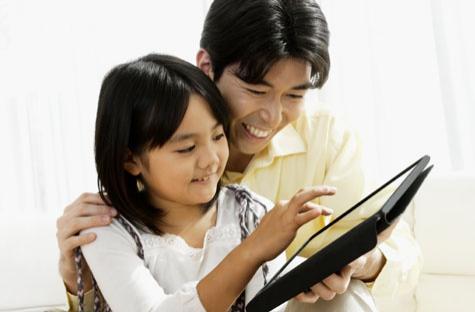A communications technology professional from England, Stephen Carrick-Davies, recently revealed an idea of his 10 year old son, Finn, which had astounded him.
Finn suggested a ‘screen free day’ for the family – not just as a one-off, but once a week.
It must have been quite a surprise to Carrick-Davies who spends his professional life working in new communications technology and particularly its intersection with the lives of children, schools and parents.
Many parents have also embraced technology and all it offers with open hands, but we will never match the tech-savvy level of children today. According to Google’s Executive Chairman, Eric Schmidt, there are only two states for children these days. “They are either asleep or online ... (and) even if they wake up in the middle of the night they go online,” Schmidt told a conference early last year.
While those of us who are parents are consumers of technology, today’s child literally inhabits the digital space. Facebook, Twitter, Skype, Google+, Flickr, You Tube, Ning, instant messaging, blogs, wikis and the list goes on. They do not know a world without them.
The impact this has on parenting is twofold. First, we have to find the right approach to connecting with our children. Second, we have to worry about the digital life they’re inhabiting – a much more difficult safety issue to deal with than crossing the road.
Who amongst us has not been guilty of a weekend or a holiday interrupted by “just one more e-mail to look at”, or “Mum really needs to make this call to make sure everything is alright at work”? I am the first to admit my guilt. Until two years ago, I was in a succession of roles which required me to be available 24/7 often working with people in multiple time zones around the world and with a CEO and Board who had no respect for my weekend or my holidays. We justify our addiction to the little machine in our hand or at our ear because it’s work, but what example does it set to our children when we’re so glued to a screen?
Like New Year resolutions, Carrick-Davies says the screen free day worked for the first month but it became too rigid. Instead, the family now has time each day that is designated ‘no screen time’. He reports that it has been a positive experience. “If nothing else, it has given us a sense of accountability to one another” he says, with the children also encouraged to challenge their parents if they take a ‘phone call when having a meal together.
Young people will always stretch their wings by learning about, and participating in, activities outside the home. However, today that big new world is generally in the home in the form of the computer, smart phone or tablet. So how do we become part of that borderless world without intruding in it?
Rather than fret about the digital world our children inhabit, accept that it is their world and always will be. You can say ‘no’ at home, but they will access digital life through friends and school. And while there are many sites and services that can assist you in monitoring or even regulating your child’s digital life, it will not do so entirely, and not as effectively as taking an educative and informed approach.
So here’s some practical things you can to do to get some digital balance into your life.
- Get connected! (Interestingly, the fastest growing segment in Facebook is older women). Facebook and Twitter are the two big ones to start with.
- Follow 10 year old Finn’s suggestion and find some time each day for screen free time for the entire family – all screens!
- Learn about privacy settings in Facebook, Google+ and other social networking sites and make sure they’re right for your child.
- Find out how cyber bullying and sexting happens and talk to your child about the risks and what she or he should look out for – and that you want to know if they’re experiencing it.
- Create a family website and give each child their own section to build and develop. There are many free or very inexpensive and simple content management systems around today which make this very feasible.
- Set household guidelines on what they should or shouldn’t post online or digitally, such as particular photos or whether the family is away from the home on holidays.
- Learn to be part of their world in their space by playing a favourite computer game with them, or helping them with some research for school, or sharing favourite sporting moments on You Tube.
Connecting with your child in an online setting is probably not what you thought you signed-up to when you became a parent. But look at it as just another way in which you can connect with, and do something, with your child. The key is the fact that you’re connecting - and it is better to share their world - which is, and always will be, a digital world - than be alienated from it.
Further information
Motherpedia is on Twitter @www_motherpedia & so is Bonita @bonitamersiades








 Agree (0)
Agree (0) Disagree (
Disagree (







__small.png)










